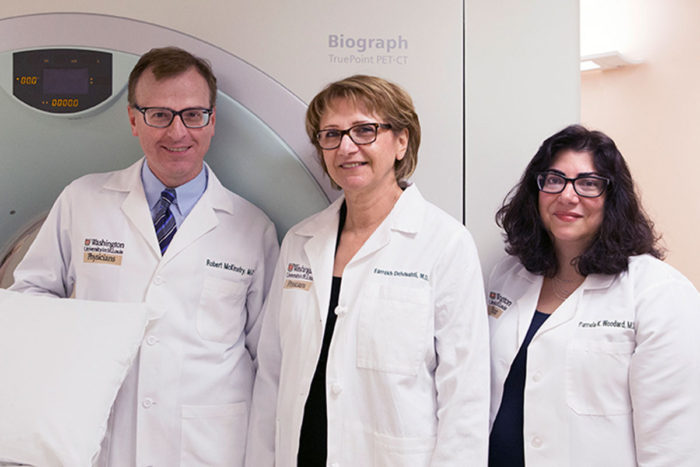Dehdashti, McKinstry, Woodard named radiology division directors
The 3 now lead nuclear medicine, diagnostic imaging and radiology research facilities
 Michael Worful
Michael WorfulRobert C. McKinstry, MD, PhD, (from left), Farrokh Dehdashti, MD, and Pamela Woodard, MD, have been named division directors at Mallinckrodt Institute of Radiology at Washington University School of Medicine in St. Louis.
Farrokh Dehdashti, MD, Robert C. McKinstry, MD, PhD, and Pamela Woodard, MD, have been named division directors at Mallinckrodt Institute of Radiology at Washington University School of Medicine in St. Louis.
Dehdashti now leads Nuclear Medicine, McKinstry heads up Diagnostic Imaging, and Woodard takes the helm at Radiology Research Facilities.
Farrokh Dehdashti, MD, a professor of radiology and co-leader of the Oncologic Imaging Program of Siteman Cancer Center at Barnes-Jewish Hospital and Washington University School of Medicine, has been named senior vice chair and director of the Division of Nuclear Medicine. She leads a team of physicians and researchers who use small amounts of radioactive agents to image bones, organs and other parts of the body. The doctors also use radioactive drugs to treat diseases such as hyperthyroidism.
Dehdashti is known for her groundbreaking work on steroid hormones in breast cancer. She showed that a positron emission tomography (PET) imaging agent can be used as a noninvasive, reliable method to determine whether a patient’s breast cancer depends on estrogen or progesterone hormones for its growth and, consequently, whether hormone-blocking therapies are likely to be effective.
Robert C. McKinstry, MD, PhD, a professor of radiology and of pediatrics, has been named senior vice chair and director of the Division of Diagnostic Imaging. As such, he heads a team of doctors who use images to diagnose ailments and guide disease therapies.
In his former position as director of Radiology Research Facilities, McKinstry oversaw the installation of a custom-built MRI scanner that maps connections among parts of the brain, and also of a new imaging device at the Institute’s Center for Clinical Imaging that simultaneously performs PET and MRI scans. Joint scanning eliminates the need to move patients from one imaging unit to another, making it easier to combine data from both scans to produce enhanced details.
Pamela K. Woodard, MD, a professor of radiology and of biomedical engineering, took over for McKinstry as senior vice chair and director of the Division of Radiology Research Facilities, becoming the first female division director in the department. In this role she provides administrative oversight to the directors of the department’s eight research facilities.
Woodard is known for her work on cardiovascular imaging, especially translating research into patient care. She led a team that developed a nanoparticle-based imaging agent to illuminate dangerous plaque in arteries. Doctors hope to use the agent — which is being evaluated in clinical trials — to identify patients at high risk of stroke. She was also on the steering committee of a multicenter team that showed that patients who come into the emergency room with chest pain, and who then receive a scan known as a coronary computed tomography angiography as the first step in evaluation, are discharged sooner than those whose evaluation process follows the routine standard of care.








